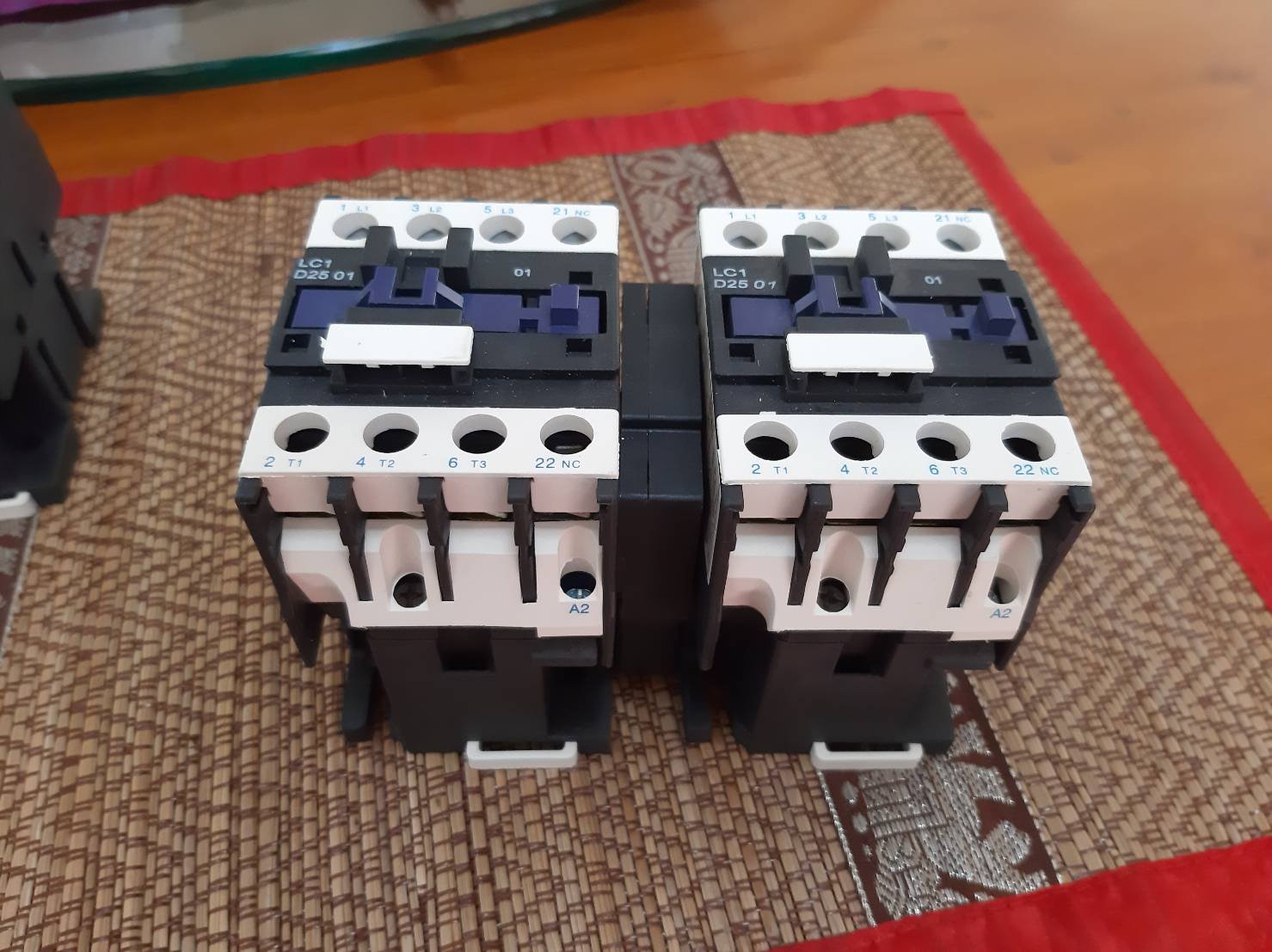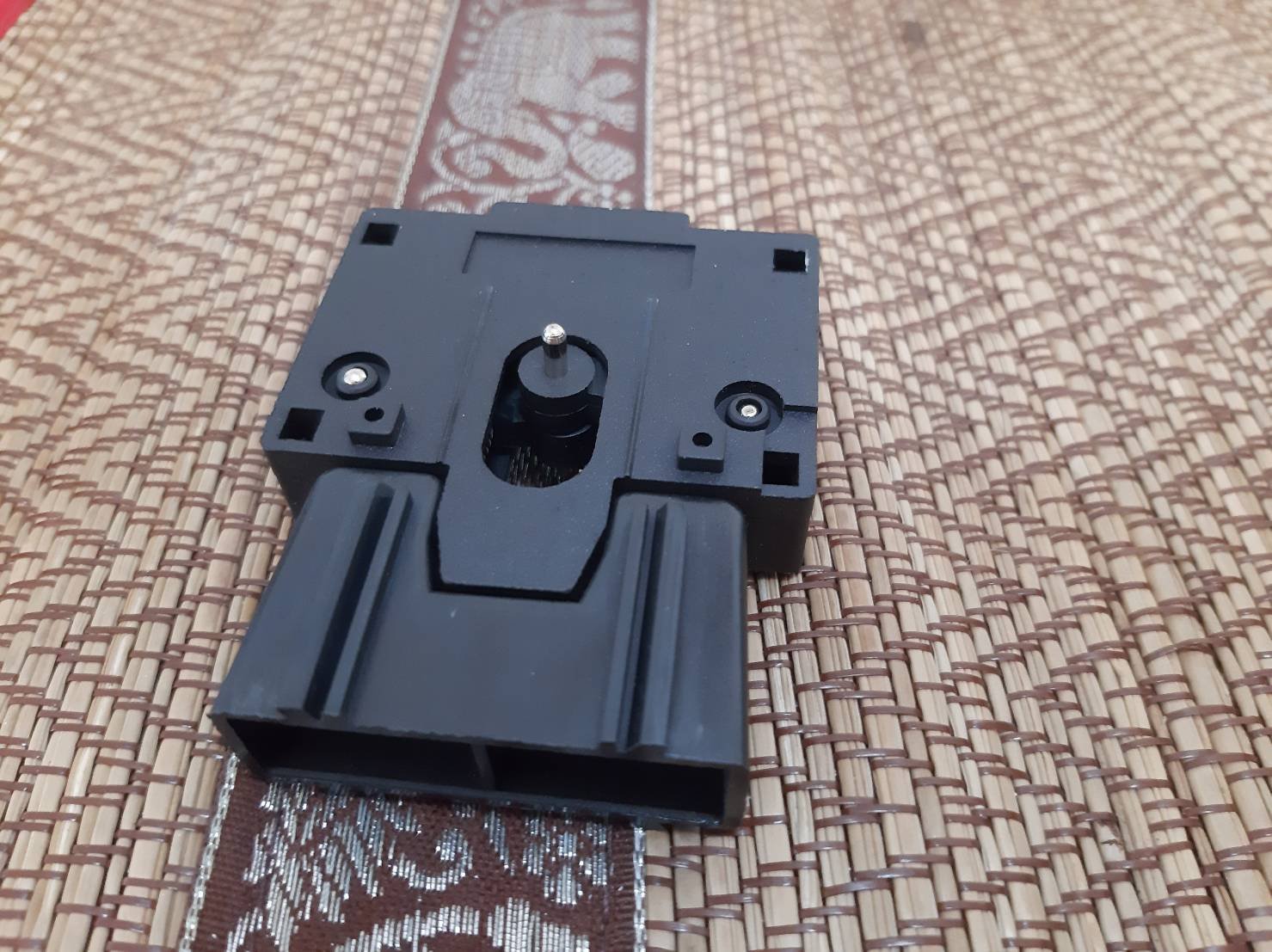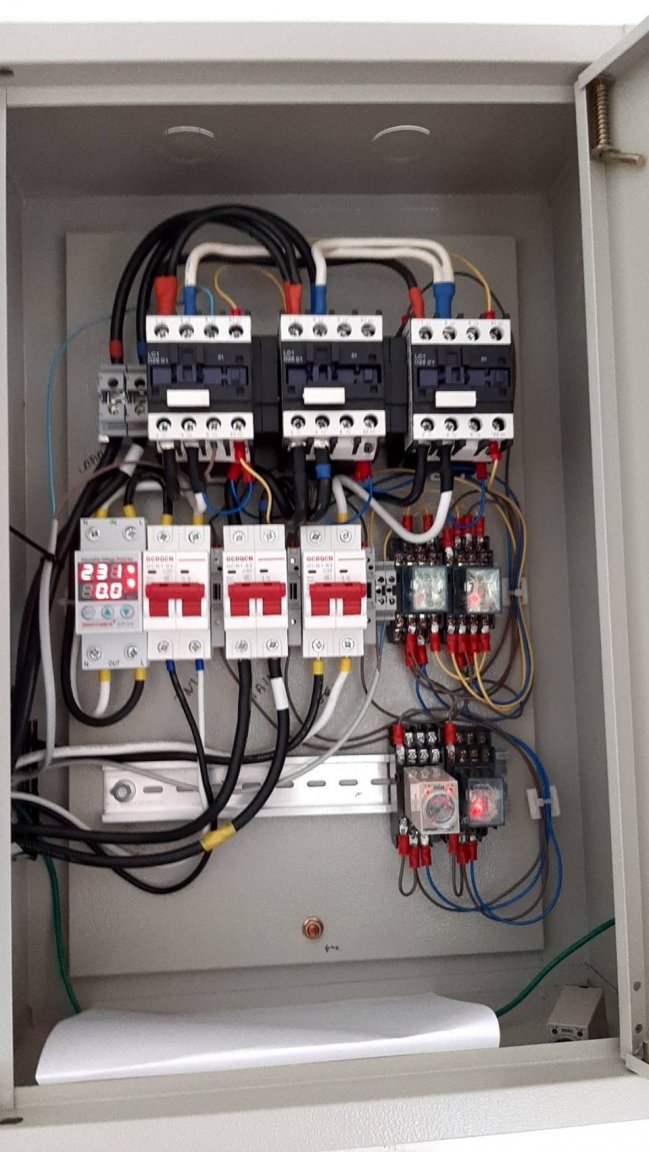-
Posts
46,460 -
Joined
-
Last visited
-
Days Won
2
Content Type
Events
Forums
Downloads
Quizzes
Gallery
Blogs
Everything posted by Crossy
-

How about a DIY three-input Automatic Transfer Switch?
Crossy replied to Crossy's topic in Alternative/Renewable Energy Forum
Contactors are not inexpensive and the accessories (like mechanical interlocks) can be difficult to come by locally. In fact, I wasn't going to build this unit until I came across this item on Lazada https://www.lazada.co.th/products/i3007531853-s11043074833.html That's a 3-phase "reversing" contactor, but it actually consists of two normal contactors plus a mechanical interlock. At 450 Baht it's an absolute steal, so I bought two, giving me the required 2 mechanical interlocks plus a spare contactor for under a grand! Result! At time of writing there is still stock, so if you're thinking of doing this get in there quick ???? It all just clips together so re-configuring to a group of 3 contactors plus 2 mechanical interlocks was a piece of cake. Clipping it all onto a DIN rail holds it together, although a couple of extra screws into the backplate is a wise addition. IMPORTANT NOTE: As designed, the mains contactor is the one in the centre, ensuring that if it is energised the other two cannot operate. If you re-configure the logic I would ensure that the mains contactor is still the centre one for maximum safety. -
It's been a while since we had a thread from Crossy Labs. So here we go with something to make the little grey-cells work. I put this unit together to meet a specific need but the basic design could be adjusted for different scenarios. This design uses relay-logic and commercial timers and under/over units so there's no software to worry about. When developing any kind of transfer switch it is imperative that :- The mains and either of the other inputs cannot be connected to the load at the same time (not good for the inverter or genset). It is vital that it is impossible for the inverter or genset to back-feed into a dead grid (to protect the chaps trying to get your power back on). The contactors used are good for 40A continuous current, this should be adequate for a 15/45 supply if you move your big loads (water heaters) to the non-controlled side of the switch and only run your domestic loads via the switch. Other than cost there's no reason that bigger contactors with the same contact arrangements cannot be used. The contactors are electrically interlocked so that, if the mains is on (and within the required voltage range) neither of the other two contactors can be energised thus isolating the inverter and genset from the load. As a "just in case" backup the contactors are also mechanically interlocked with the same requirement. The mechanical interlock is there as a final safety function (should a relay get stuck or similar), in normal operation it never comes into play. This transfer switch is intended to work with the EPS (Emergency Power Supply) output of our Sofar grid-tie hybrid inverter. The logic works like this:- Mains on = load powered by the mains (the grid-tie inverter is also operating). Mains off = load powered by the inverter EPS output (some loads are shed) Mains off + Inverter off (batteries flat or overload tripped) = load powered by the genset (shed loads are restored as the genset has a bit more oomph) To whet the appetite, here is a photo of the completed unit. And the circuit diagram. Note that there are a couple of differences between the diagram and the unit as implemented due to the topography of our distribution boards. The original TinyCAD file should you want to fiddle with it. 3-way transfer switch for AN a.dsn If that's not scared you off then more details are coming in the following posts.
-
-
An epic struggle was captured by our CCTV starring a Black-crowned Night Heron (Nycticorax nycticorax), which figures as it was about 8PM. He spent a full 10 minutes failing to swallow his catch before being spotted by the dogs and flying off (catch still in beak). My Movie.mp4
-
There's not really much of note going on, level goes up and down with the tide. Not really much overall movement, hoping for a general decrease before the big tides at the end of the month. Madam notes that there were some issues up in Ang Thong when some annoyed villagers who have been flooded for a while decided to share their water with the adjacent village who were (until then) safe behind their sandbags!
-

Switch between grid and off grid system in same house
Crossy replied to Elik's topic in Alternative/Renewable Energy Forum
For tiny systems many don't bother and just DIY. Just ensure that you never go into net-export and that the meter man doesn't see the meter going backwards (assuming you have a conventional disc type meter, electronic meters are a different animal). -
If you post on the Thai Biodiversity Facebore group https://www.facebook.com/groups/thai.species.id with location details they will ID for you. Usually, a very rapid response ???? If you don't use FaceBook I'll post the photos if you can give a more precise location.
-

Import tax customs duty runaround from an item purchased from Amazon
Crossy replied to dhupverg's topic in General Topics
Generic "Sports Equipment" (HS Code 9506.99.0000) should be 10% duty plus 7% VAT on the declared CIF value. So about $19 if we take $104 as the CIF. Then of course DHL have their fees to add on. The problem is, of course, they have the money so there's really no reason (by their thinking) to actually do anything about giving some of it back. How much is your time worth? -
The use of AC rated MCBs on DC circuits has been discussed a few times, but what about mis-wiring of DC MCBs? Check those polarity and direction markings. It matters!
-
I would certainly clean up any splintered ends with a nice sharp saw. Madam has some mysterious stuff she paints on the cut ends which apparently prevents fungus. I'll try and find out what it is.
-
Antennas (and associated electronics) of some kind, possibly 5G.
-
I doubt there will actually be any issue, many meters are unsealed (ours is one) and many don't even have the covers fitted. If your local man removes the seal then you can blame him Even in the UK they simply re-seal the meter (IIRC they use a different colour seal) and note on the account. Remove the seal again and you're possibly for the high jump.
-
Looks like the meter reader had his wellies (although he did manage to come at low tide) ???? Unfortunately, we used 303kWh so a reduced discount of 156.06 Baht ????
-

Has anyone received a new UK passport recently?
Crossy replied to onebaht's topic in Visas and migration to other countries
Yup, that's the number I have and got little joy with. I'll try again later and see if I get a different rep. -

Has anyone received a new UK passport recently?
Crossy replied to onebaht's topic in Visas and migration to other countries
Do you still have the number? I applied through an agent so don't have the actual VFS receipt ???? -

Has anyone received a new UK passport recently?
Crossy replied to onebaht's topic in Visas and migration to other countries
Perfect! Used my Thai mobile number. Got to be handy in future. -

Has anyone received a new UK passport recently?
Crossy replied to onebaht's topic in Visas and migration to other countries
Of this I'm not sure, it's been aeons since I used Skype-Out to call a real phone. I did actually get to talk to a person. Story in the post above yours. -

Has anyone received a new UK passport recently?
Crossy replied to onebaht's topic in Visas and migration to other countries
Which number did you use and how did you get to speak to an actual person. I only have the VFS reference which doesn't work with the automagic system. I'm evidently missing something here. EDIT Well I got to a person using the "anything else" options, he took details and "transferred" me, at which point the call dropped. EDIT 2 Finally got a human again. Net result "We cannot deal with this you have to contact VFS!" Grrr. -

Has anyone received a new UK passport recently?
Crossy replied to onebaht's topic in Visas and migration to other countries
Fell at the first hurdle, can't use Skype as it appears as a "withheld number" ???? I suppose I'd better load up my mobile credit ???? -

Has anyone received a new UK passport recently?
Crossy replied to onebaht's topic in Visas and migration to other countries
Yeah, looks like I'll be calling them soon ???? -

Has anyone received a new UK passport recently?
Crossy replied to onebaht's topic in Visas and migration to other countries
13 weeks and counting since UK Passport Office took the $$$ from my credit card ???? I knew there were delays, but ...










